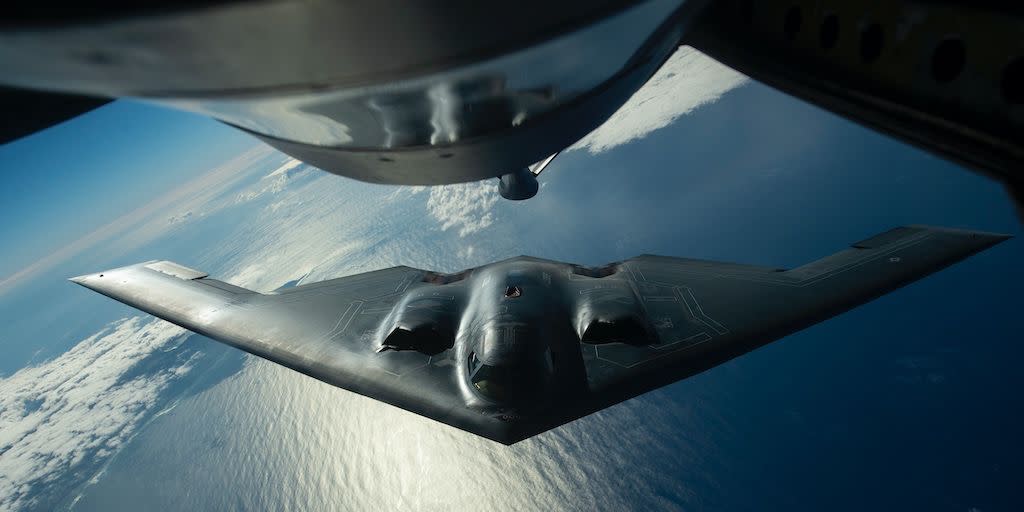Look Inside the Cockpit of a B-2 Bomber for the First Time

For the first time, we now know what the inside of a B-2 Spirit bomber cockpit looks like. And that's not all: Thanks to a new series of articles from Defense News, we also know just what maintainers go through to keep the heavy strategic bomber flying, and what kind of munitions the bomber carries.
The articles kick off Defense News’ coverage of the Pentagon’s nuclear triad, “The U.S. Nuclear Enterprise.” One article includes cockpit footage from inside a B-2 Spirit stealth bomber, the first time outside video cameras have been allowed inside the jet.
As a stealthy, high-tech jet packed with the latest technology, the U.S. Air Force is understandably reticent about allowing the outside world a glimpse of the cockpit controls. Here’s a preview:
The full video shows the bat-winged bomber, part of the 13th Bomb Squadron of the 509th Bomb Wing, cozying up to a KC-135 Stratotanker for refueling.
Another article describes the unique issues B-2 maintainers deal with to keep the bomber stealthy and available for action. More than 250 materials make up the B-2’s stealthy coating, designed to help minimize the bomber’s radar signature, and in many instances tolerances must be “within a thousandth of an inch.”
Ground crews must also devise ways to keep the heat down in the B-2, as the introduction of new power-hungry systems increases heat levels inside the aircraft. The B-2 uses both air and liquid cooling to keep temperatures down.
Finally, another article details what factors Air Force personnel take into consideration when arming bombers for missions, and how the modular nature of the bombs-described as “Mr. Potato Head bombs” by one munitions specialist-allows the service to tailor bombs to the mission.
Handlers start off with a standard, unguided conventional weapon such as the Mk. 84 2,000-pound bomb, and attach a variety of accessories they think would deliver the best performance. These include GPS or laser seekers for precision targeting, movable or fixed bomb fins for steering or non-steering, and fuzes that would allow for a contact or underground detonation.
The B-2 can carry the world’s largest conventional bomb, the GBU-57 Massive Ordnance Penetrator. In addition to conventional weapons, the B-2 can carry free-fall nuclear bombs, including the B61 bomb and the B83 bombs. The B83 is also the most powerful nuclear nuclear weapon in the U.S. arsenal, with an explosive yield of 1.2 megatons, or 1,200 kilotons. (For comparison, the bomb dropped on Hiroshima had a yield of just 16 kilotons.)
The B-2 is one of the U.S. Air Force's most secretive planes, but finally we get a good look at what makes it tick.
('You Might Also Like',)

